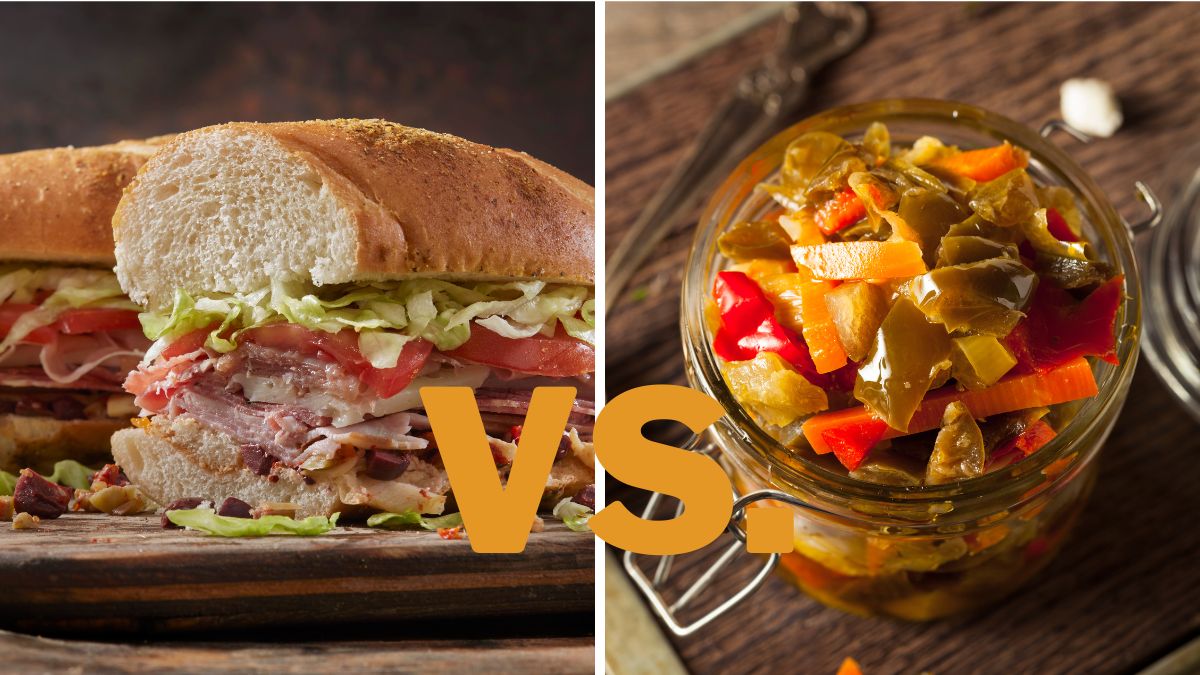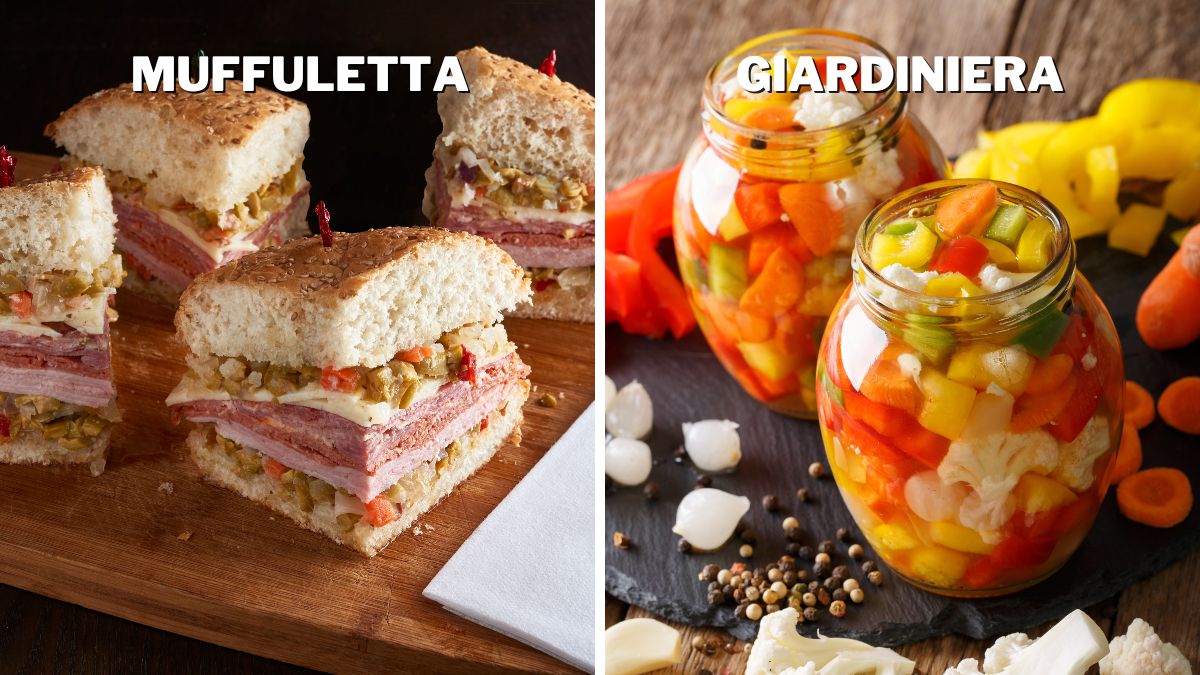Muffuletta vs. Giardiniera: Differences & Uses

For me, nothing in life is as comforting as a heaping plate of giardiniera or a layer-packed muffuletta. Both are signature Italian dishes, but they have fundamental differences – in ingredients, preparation, taste, nutrition, and even popularity. Whether you’re looking for a bold, salty punch of flavor in a sandwich, or a milder, crunchy salad complement, these two will work perfectly for your needs. Still, what’s the difference between muffuleta and giardiniera?
Muffuletta is an Italian-American sandwich. The most classic version of this sandwich includes salami, ham, Swiss and Provolone cheese, and olive salad. Giardiniera is an Italian condiment that consists of pickled vegetables, like celery, carrots, cauliflower, and peppers, marinated in olive oil and vinegar.
No matter which one you choose, you’ll surely enjoy Italy’s Mediterranean flavors. To find out which one is perfect for your current needs, read on and explore the details. Let’s see what makes these two different.
Ingredients & Preparation
The most obvious difference between muffuletta and giardiniera is the ingredients used. It’s also the most crucial one.
Muffuletta is a type of sandwich typically made with a round loaf of Italian bread, salami, deli ham, provolone cheese, and olive salad. The olive salad consists of green and black olives, celery, onion, garlic, carrots, capers, oregano, and parsley which is marinated in red wine vinegar or olive oil. The sandwich is usually served at room temperature or occasionally heated.
Giardiniera comprises a variety of pickled vegetables, such as cauliflower, carrots, and peppers, that are marinated in vinegar or oil. It also includes other vegetables, such as celery and onion, for extra flavor. Unlike the muffuletta, which is served at room temperature or heated, giardiniera is served cold or at room temperature.
When it comes to the preparation of giardiniera, the vegetables are chopped up or grated and then added to a brine solution of white vinegar, red wine vinegar, and some spices to make a flavorful pickling liquid.
The vegetables then get placed in jars or containers with the brine solution and stored in the refrigerator — usually overnight — to allow the flavors to develop fully.
Muffuleta, on the other hand, is prepared just like any other sandwich: first, spread the olive salad generously on the cut bread, then add whatever salami and ham you wish for your sandwich, then some cheese, and voila!
However, the best would be not to eat it right away. Trust me, just leave your assembled sandwich in the fridge and let all the tastes come together nicely.
Differences in Taste & Nutrition
When it comes down to comparing the two, both muffuletta and giardiniera differ in taste and nutrition.
Starting with their taste, a muffuletta is a heavier sandwich overall due to the many layers of meat and cheese. This makes it heartier and more filling but also gives it a heavier flavor that can be overwhelming for some. On the other hand, giardiniera is much lighter and refreshes the palate due to its mix of bright vegetables and pickled peppers.
Regarding nutrition, a typical muffuletta is higher in calories than giardiniera. That’s because muffulettas usually contain processed meats such as salami, ham, or capicola, which are high in fat and salt content. [1]
On the other hand, a giardiniera is typically healthier because it contains fresh vegetables that are high in fiber and low in sodium content.
It’s important to note, though, that nutrition will ultimately depend on how you assemble your sandwiches – using whole-grain bread, lean meats, or plant-based proteins can all make your sandwich more nutritious. Giardiniera can be eaten as is or added to dishes or sandwiches for extra flavor and crunch.
When looking for better nutrition and more variety in your diet, giardiniera will be better than muffuletta. As with any dish, portion sizes should still be considered to ensure you get all the nutrition without overindulging in fat or calories. [2]
Differences in Uses

Muffulettas are most commonly used as cold platters, making them a popular choice for parties and family gatherings. Giardiniera, on the other hand, is most frequently served as a condiment or side dish – on top of bruschetta, pizza, or even on hotdogs.
Although both have similarities in terms of ingredients and preparation, the way you use them can make all the difference. Muffulettas can be served cold or at room temperature, whereas giardinieras are best served cold to maintain their crunchy texture.
Popularity
Regarding popularity, muffuletta and giardiniera don’t differ too much when it comes to the United States. They are both popular and widely enjoyed. However, outside of the US, giardiniera is more popular in Italy than muffuletta, which is an American sandwich specialty.
In Italian cuisine, giardiniera is a staple condiment that adds flavor and texture to sandwiches, salads, and antipasti platters. It was traditionally used to preserve pickled vegetables to remain edible over long periods, making it a popular item among fishermen and farmers.
In contrast, the muffuletta is an iconic New Orleans sandwich that was created by Sicilian immigrants in 1906 and has become very popular in the United States.
